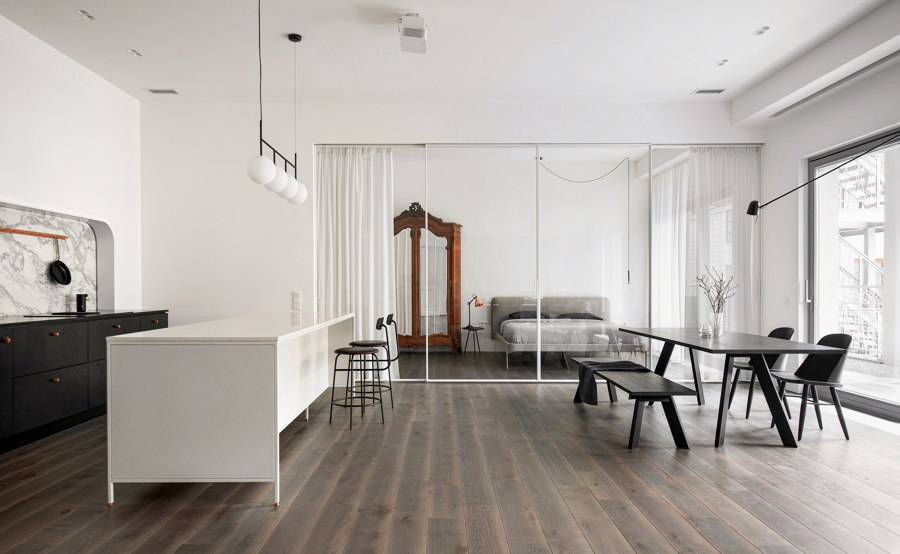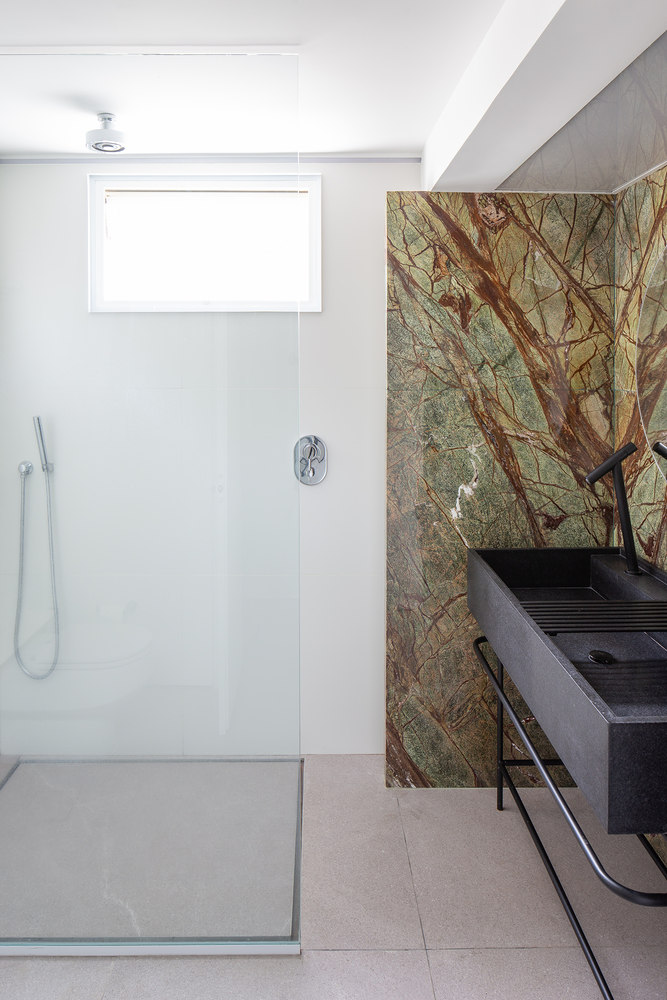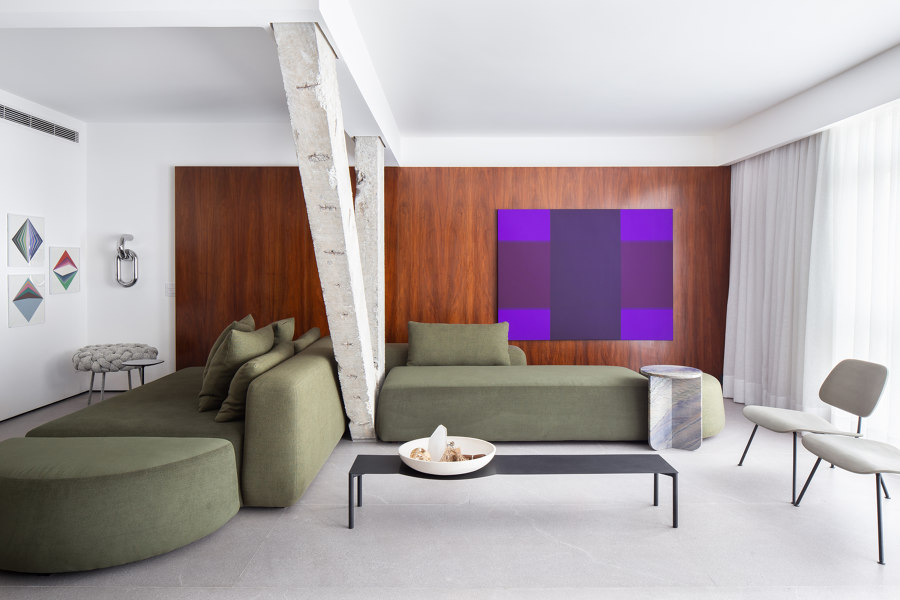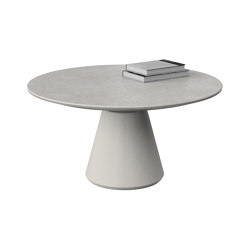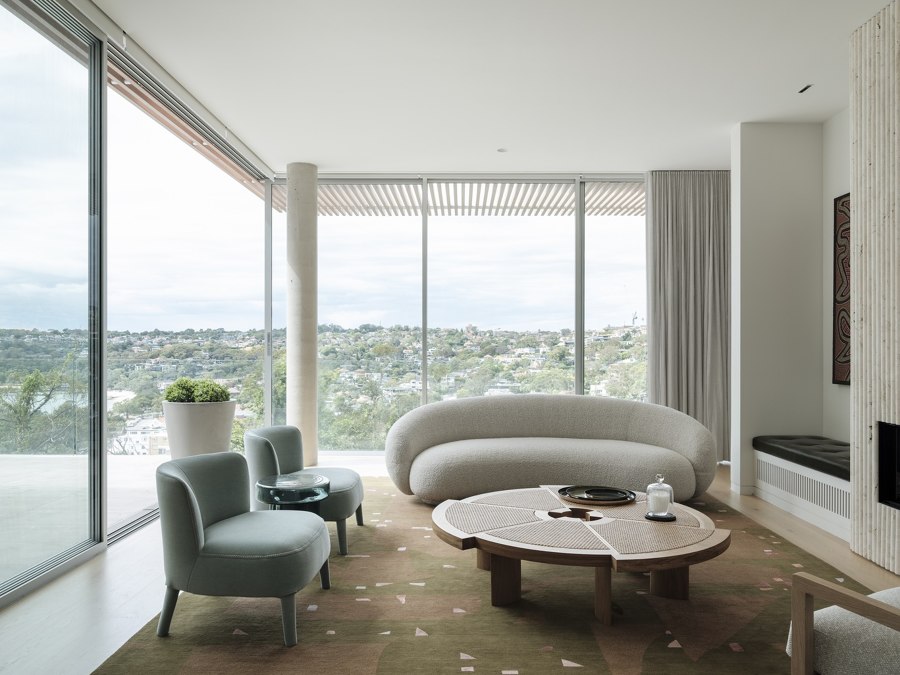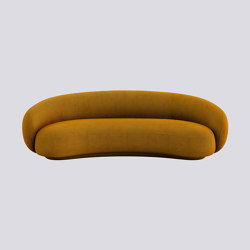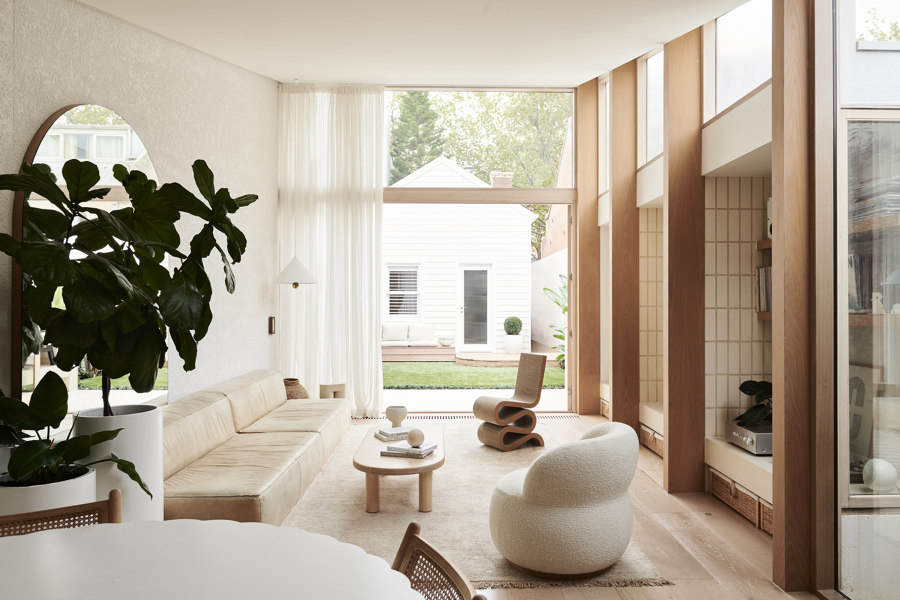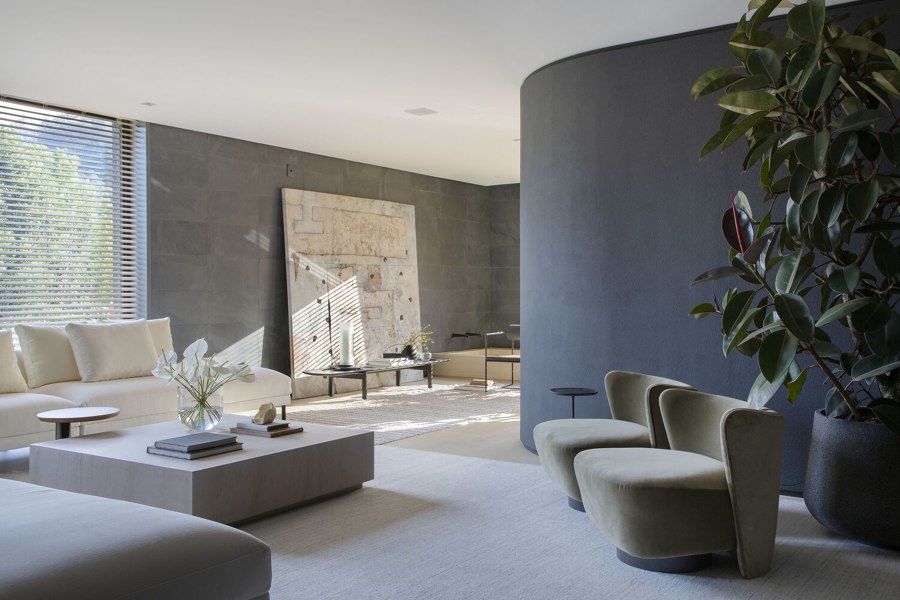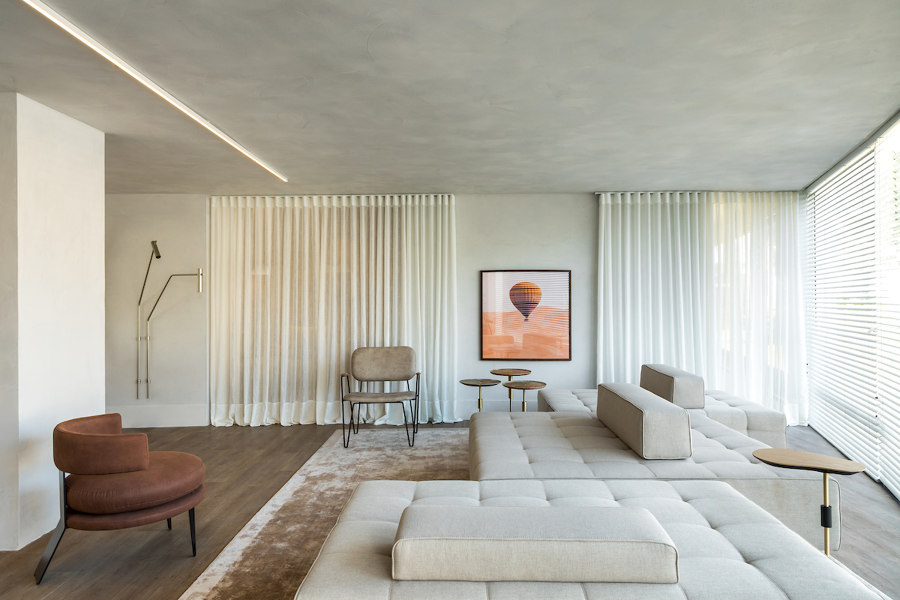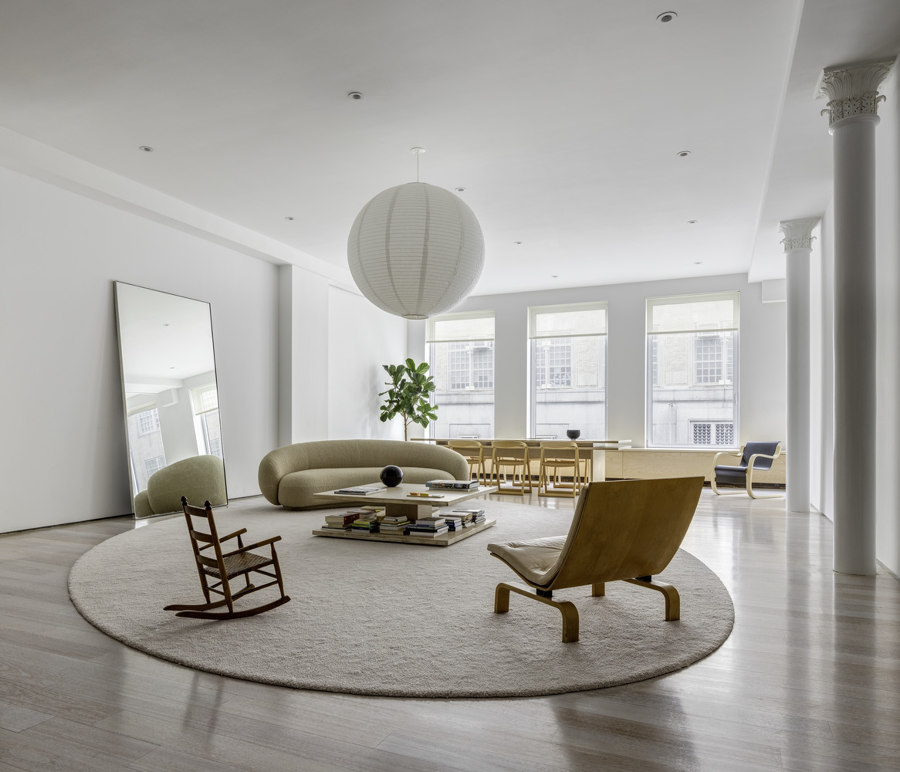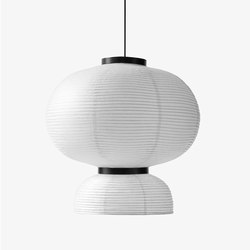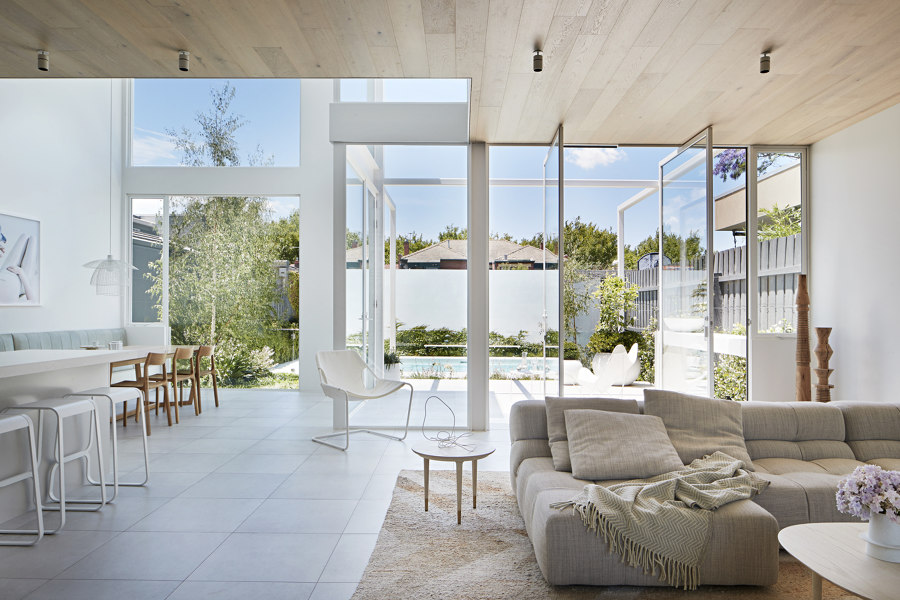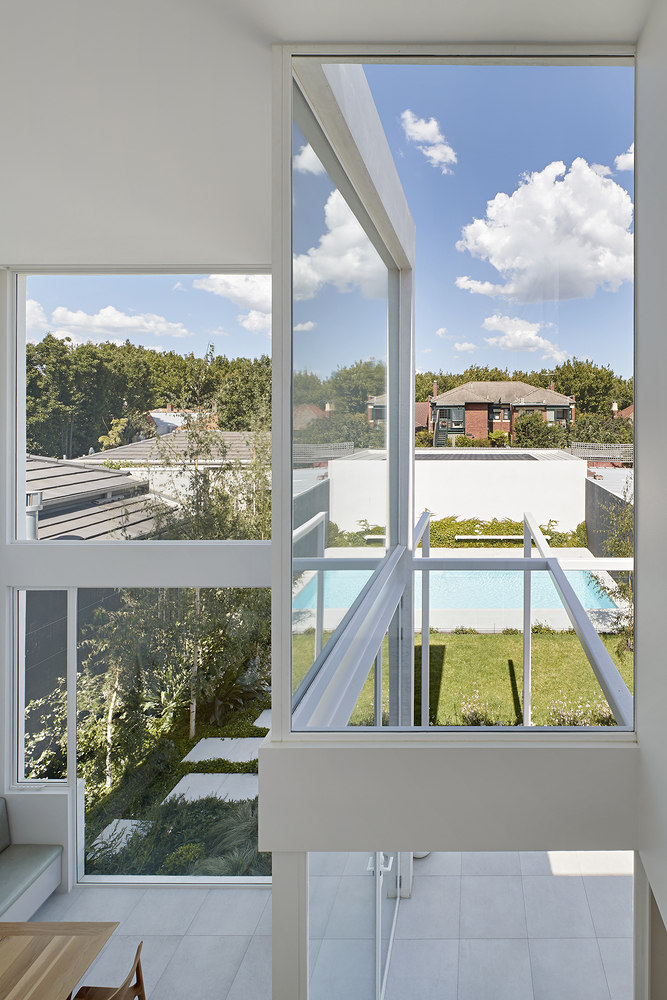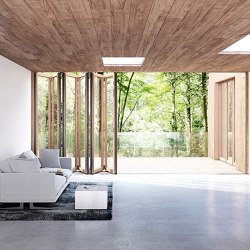Six evergreen design elements that define contemporary interiors
Text by Claire Brodka
13.10.23
Adaptability and timelessness are key factors in contemporary interior design. From floor-to-ceiling glass to statement lighting, we take a look at six of the style's defining elements.
Meireles+Pavan Arquitetura's Ceppo Apartment in Brazil puts emphasis on the use of exclusive and rustic materials to create a contemporary and comfortable atmosphere for owners and guests. Photo: Fran Parente

Meireles+Pavan Arquitetura's Ceppo Apartment in Brazil puts emphasis on the use of exclusive and rustic materials to create a contemporary and comfortable atmosphere for owners and guests. Photo: Fran Parente
×When it comes to forward-thinking interior design, adaptability and timelessness are two key factors that can guarantee a home will look just as current years from now as it does today. One interior style that makes use of them more than any other: contemporary. By borrowing elements from several prominent styles and combining them into a harmonic whole, contemporary interiors stay current even as trends move on.
By borrowing elements from several prominent styles and combining them into a harmonic whole, contemporary interiors stay current even as trends move on
Contemporary interior style was a natural evolution of midcentury-modern aesthetics and was first coined as its own term around the 1970s. Signifying a mix of predominant styles at the time, it borrowed heavily from popular aesthetics such as modernism, postmodernism and Art Deco. By combining elements of each to varying degrees, contemporary homes reflected a certain in-the-know-quality without risking an imbalance in favour of one or the other.
The airy Palm Frond Retreat by Koichi Takada Architects combines a variety of materials, textures and symmetric shapes to create a contemporary whole. Photo: Tom Ferguson
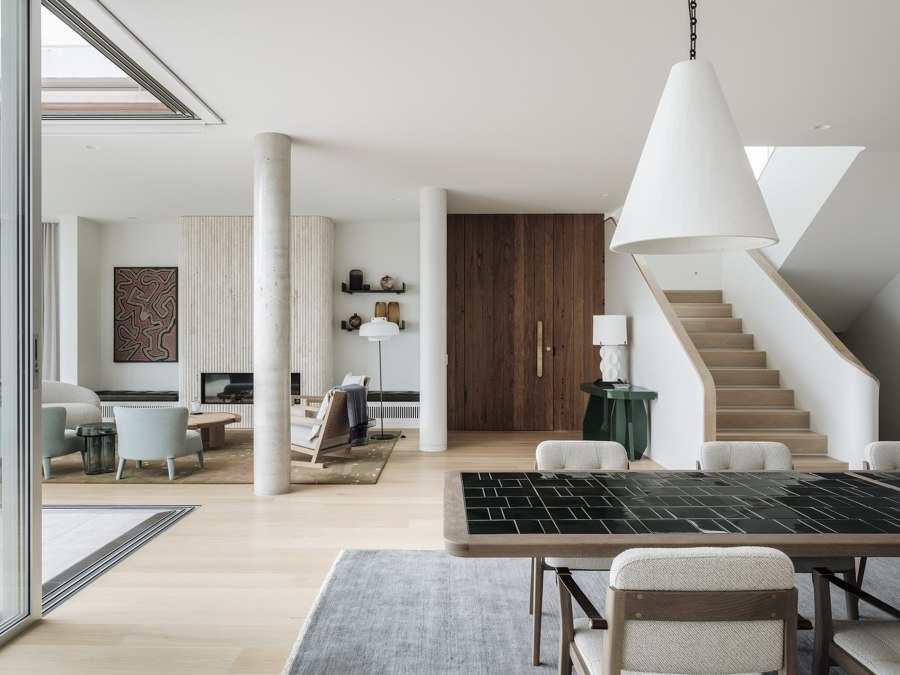
The airy Palm Frond Retreat by Koichi Takada Architects combines a variety of materials, textures and symmetric shapes to create a contemporary whole. Photo: Tom Ferguson
×Fast forward a half-century and contemporary interiors are still evolving at a rapid speed. With the introduction of farmhouse, Japandi or minimalism, there are more aesthetics to choose from than ever, and contemporary interiors continue to pull reference points from all of them for a unique, forward-thinking look.
Through clever juxtaposition and layering of different accent pieces against an often constant modern shell, they can easily be adapted over time to ensure homes stay current. But what are the components that remain constant even with this ever-changing fashion? We explore six evergreen design elements that define contemporary interiors.
Interior MFN apartment in Saint Petersburg, Russia, by INT2architecture (top and middle) focuses on quality furniture over quantity. The Guest sofa by La Cividina (bottom) acts as a standalone piece. Photos: INT2architecture (top, middle)
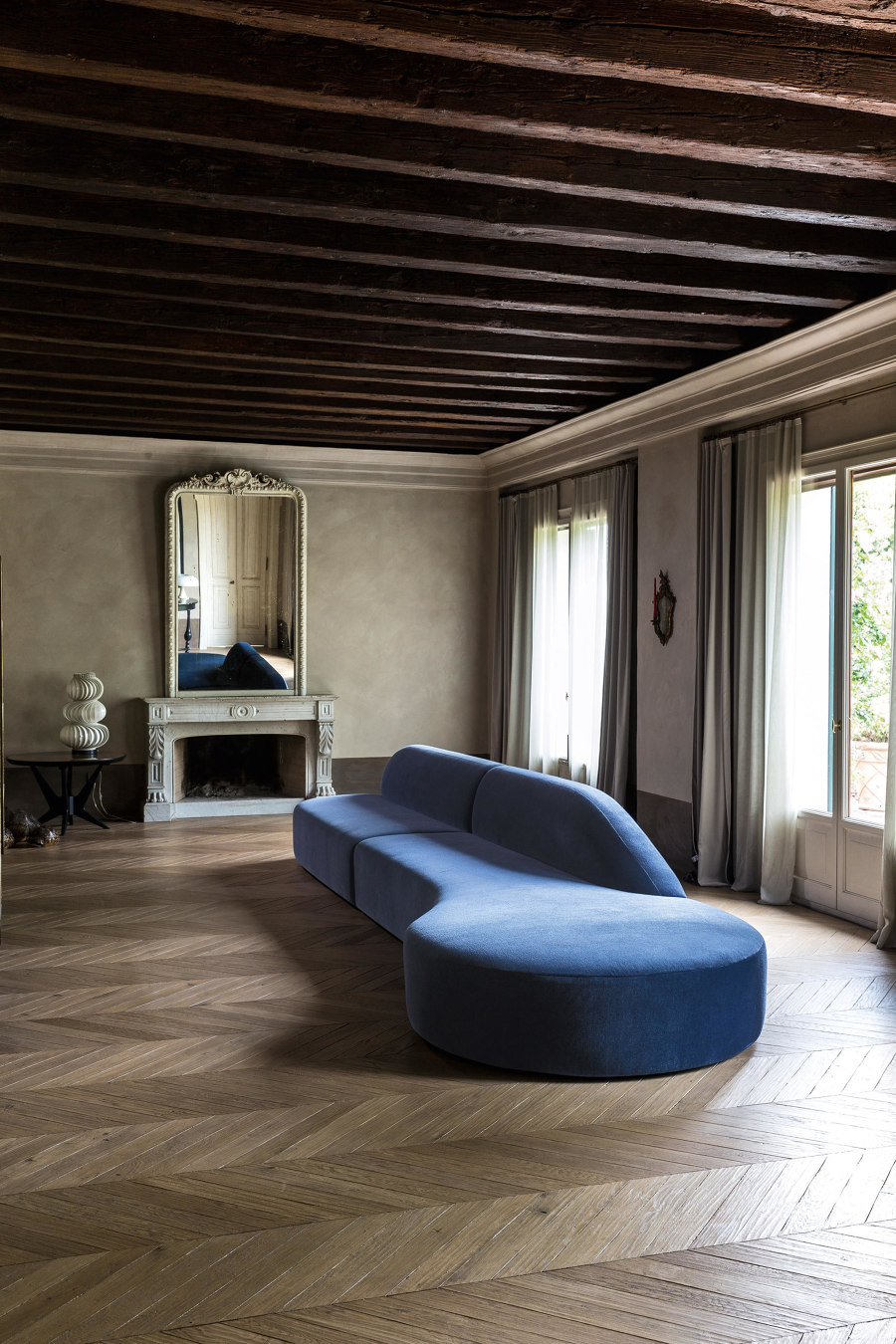
Interior MFN apartment in Saint Petersburg, Russia, by INT2architecture (top and middle) focuses on quality furniture over quantity. The Guest sofa by La Cividina (bottom) acts as a standalone piece. Photos: INT2architecture (top, middle)
×Minimalist furniture
Upon entering a contemporary home, one thing you certainly won't find is an excess of furniture. As Ludwig Mies van der Rohe aptly put it: 'less is more.' Staying true to this idea, a lot of contemporary interiors rely on using only the bare necessities to function on a day-to-day basis. Built-in wardrobes or cabinets can be a clever way to create storage that doesn't crowd the room and hides clutter in plain sight. By sticking to only a few statement pieces such as La Cividina's streamlined Guest sofa, contemporary interiors like INT2 architecture's residential unit in Saint-Petersburg, Russia, put emphasis on craftsmanship and the powerful effect of reduction.
Apartment DL by StudioLIM creates intrigue and a contemporary flair with mixed materials (top, middle) and pieces such as BoConcept's Madrid coffee table (bottom). Photos: André Mortatti (top, middle)

Apartment DL by StudioLIM creates intrigue and a contemporary flair with mixed materials (top, middle) and pieces such as BoConcept's Madrid coffee table (bottom). Photos: André Mortatti (top, middle)
×Mixed materials
It's not just the furniture that counts on quality in contemporary interiors. An emphasis on materials is paramount, and you'll be able to spot a contemporary style by its mix of different high-end materials such as natural woods, organic fibers, polished concrete or marble. This creates a rich visual context despite the otherwise pared-down aesthetics and lets accent pieces or walls that contrast in structure make a powerful statement by themselves.
It's not just the furniture that counts on quality in contemporary interiors. An emphasis on materials is paramount
Apartment DL by StudioLIM in Cerqueira César, Brazil, for example, showcases materiality in all rooms of the house by combining the pre-existing concrete pillars with veined marble highlights, wooden wall panels, natural stone side tables and warm furniture fabrics. Marble accent pieces like BoConcept's versatile Madrid coffee table make a strong design statement with little extra effort – aside from the strenuous moving effort.
Palm Frond Retreat (top) and Canning Street House (middle) break down their contemporary clean lines with organically shaped furniture. Élitis' Kool Havane rug (bottom) adds shape from the ground up. Photos: Tom Ferguson (top), Eve Wilson (middle)
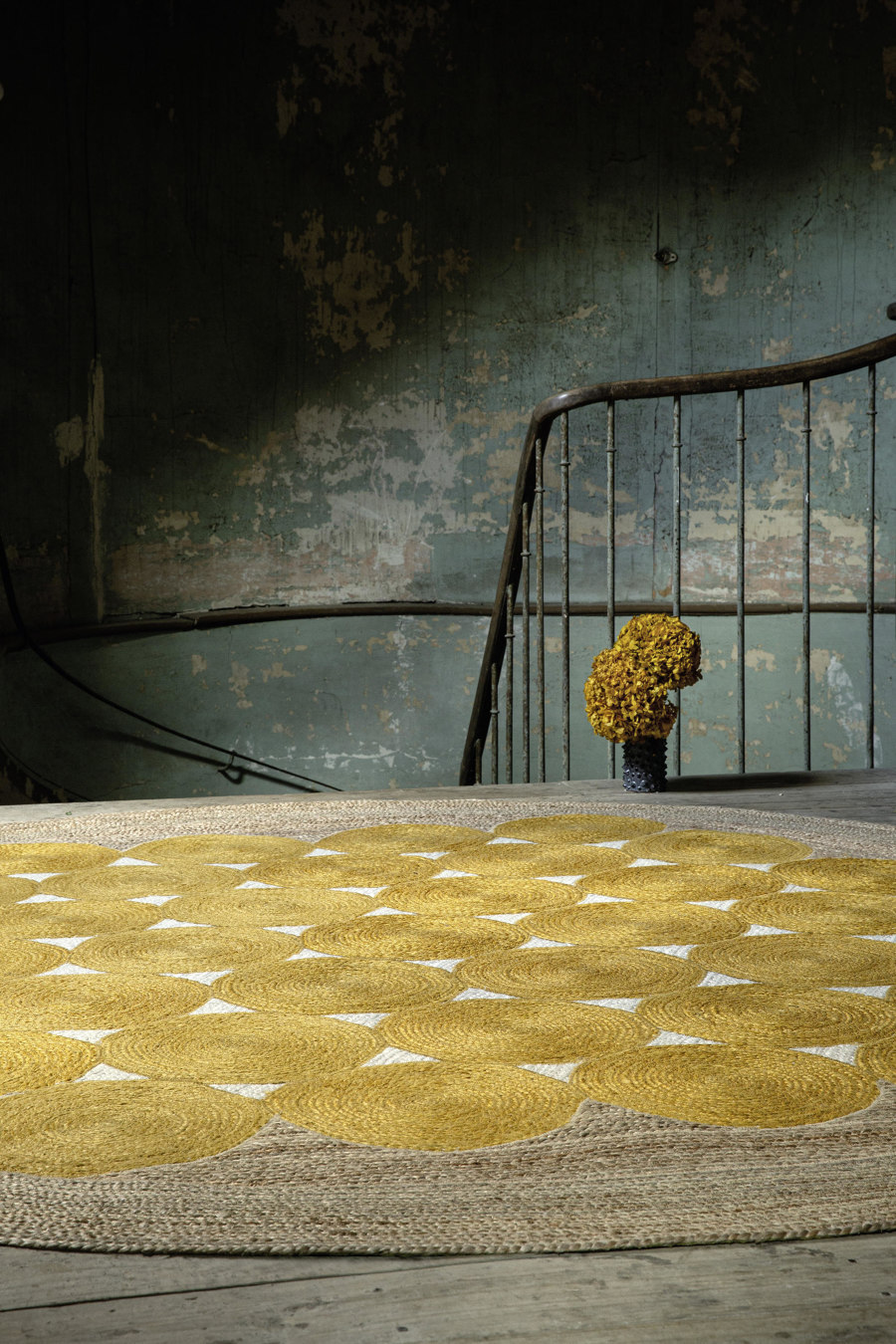
Palm Frond Retreat (top) and Canning Street House (middle) break down their contemporary clean lines with organically shaped furniture. Élitis' Kool Havane rug (bottom) adds shape from the ground up. Photos: Tom Ferguson (top), Eve Wilson (middle)
×Clean lines
Contemporary interiors prioritise strong visual lines as part of their overall look and feel — but that doesn't mean circles are out of the question. By combining straight, clean construction lines with more organic shapes, contemporary homes such as the airy Palm Frond Retreat by Koichi Takada Architects in Australia ensure that reference points continue to evolve depending on the predominant styles of the time.
Canning Street House by Fooman Architects, another property on the Southern continent, cleverly juxtaposes all kinds of geometric shapes – from circular plants to triangular lamp shades and wiggly chairs – in its living room to create a warm, yet modern environment. If getting rid of angles on furniture completely is too much of a stretch for your imagination, round rugs such as Élitis' Kool Havane design can provide an accessible circular starting point.
Green and red accents are scattered through Yugen House (top) and Momentum Apartment (middle) respectively. Objects such as Float Vessel by SkLO (bottom) add colour anywhere. Photos: Denilson Machado (top), Eduardo Macarios (middle)
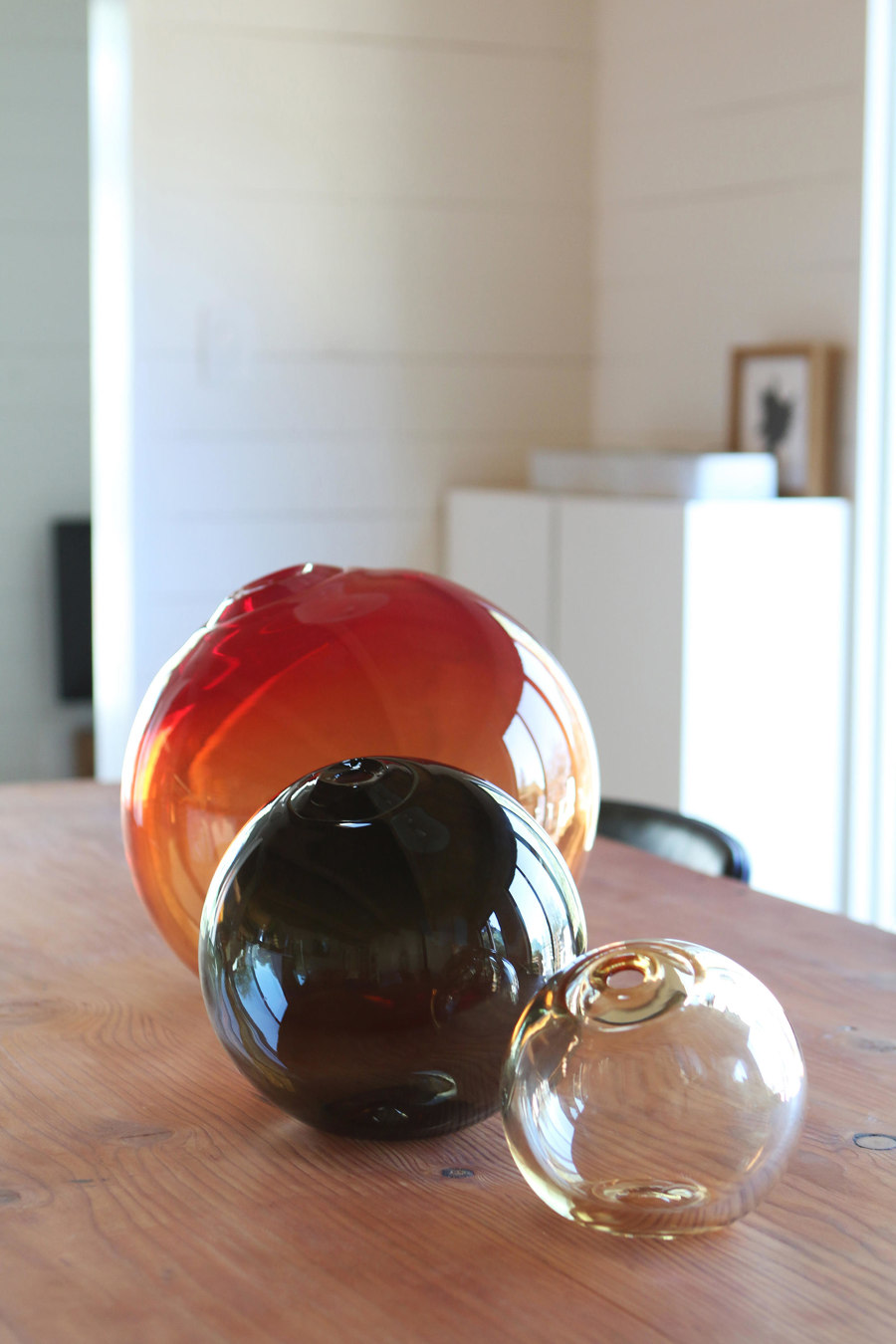
Green and red accents are scattered through Yugen House (top) and Momentum Apartment (middle) respectively. Objects such as Float Vessel by SkLO (bottom) add colour anywhere. Photos: Denilson Machado (top), Eduardo Macarios (middle)
×Muted colour palettes with accents
Contemporary interiors like Yugen House by Studio Gabriel Bordin are defined across the board by strongly relying on neutral colours such as white, black, grey, or beige. That being said, the sophistication of the colour palette is increased by placing emphasis on decorative accessories and objects such as SkLO's Float Vessel that often belong to a family on the opposite end of the colour wheel like blue, green, red, or yellow. A strict focus on two opposing tones such as the beige and red hues of Studio Boscardin.Corsi Arquitetura's residential Momentum Apartment project make for a powerful contemporary interior.
Lighting is key: both Studio Colnaghi Arquitetura's Bluish House (top) and Nakworks' In Plain Sight apartment (middle) count on oversized fixtures for effect. &Tradition's Formakami JH5 (bottom). Photos: Marcelo Donadussi (top), Rafael Gamo (middle)
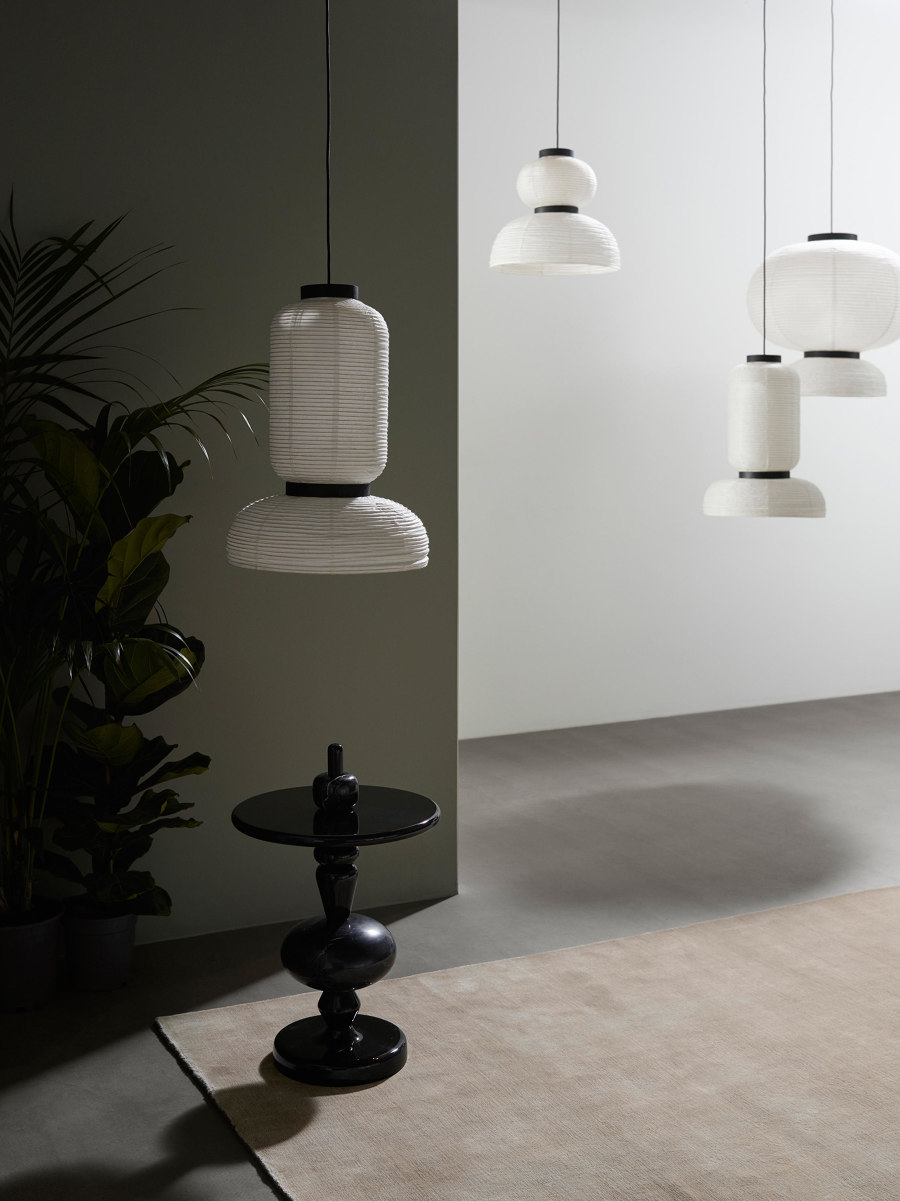
Lighting is key: both Studio Colnaghi Arquitetura's Bluish House (top) and Nakworks' In Plain Sight apartment (middle) count on oversized fixtures for effect. &Tradition's Formakami JH5 (bottom). Photos: Marcelo Donadussi (top), Rafael Gamo (middle)
×Statement lighting
Given the reduced, decluttered look of most contemporary interiors, extravagant lighting is often used to make a statement in an otherwise curtailed space. Larger-than-life chandeliers or big globular lighting structures such as &Tradition's Formakami JH5 are combined with recess lighting to complement the even glow emitted by the latter with dramatic structures that act as additional visual highlights.
Given the reduced, decluttered look of most contemporary interiors, extravagant lighting is often used to make a statement in an otherwise curtailed space
Rather than combining multiple lamps, the living room in Nakwork's In Plain Sight NYC apartment project highlights an oversized central piece with light overall interior colours that create a bright background for it to really shine. Bluish House by Studio Colnaghi Arquitetura, on the other hand, multiplies the effect of its statement lights by adding not one, but two wooden chandeliers over the dining table.
Unobstructed views at Robson Rak Architects and Interior Designers' White House (top, middle) and Solarlux's Bi-folding Woodline door (bottom). Photos: Shannon McGrath (top, middle)
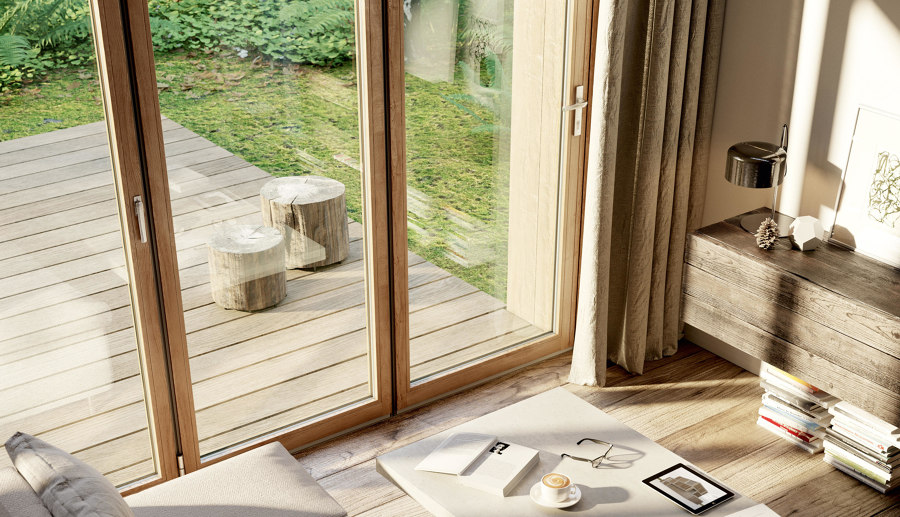
Unobstructed views at Robson Rak Architects and Interior Designers' White House (top, middle) and Solarlux's Bi-folding Woodline door (bottom). Photos: Shannon McGrath (top, middle)
×Floor-to-ceiling glass
Glass is often used in contemporary interior design to visually continue the open floor aesthetic while adding an important soundproofing element and underlining the emphasis on material. Frameless, floor-to-ceiling windows such as this model by SwissFineLine's or glass doors that open up to the outdoors like Solarlux’s Woodline design allow plenty of natural light to flow through a home and are another staple of the contemporary look.
By creating uninterrupted views and dissolving boundaries between inside and outside, the large windows at the aptly named White House by Robson Rak Architects and Interior Designers continue strong visual lines indefinitely and connect their future-forward interiors to the ever-changing outdoor scenery.
© Architonic
Head to the Architonic Magazine for more insights on the latest products, trends and practices in architecture and design, or find inspiration in a whole world of projects from around the globe through ArchDaily's architecture catalogue.


